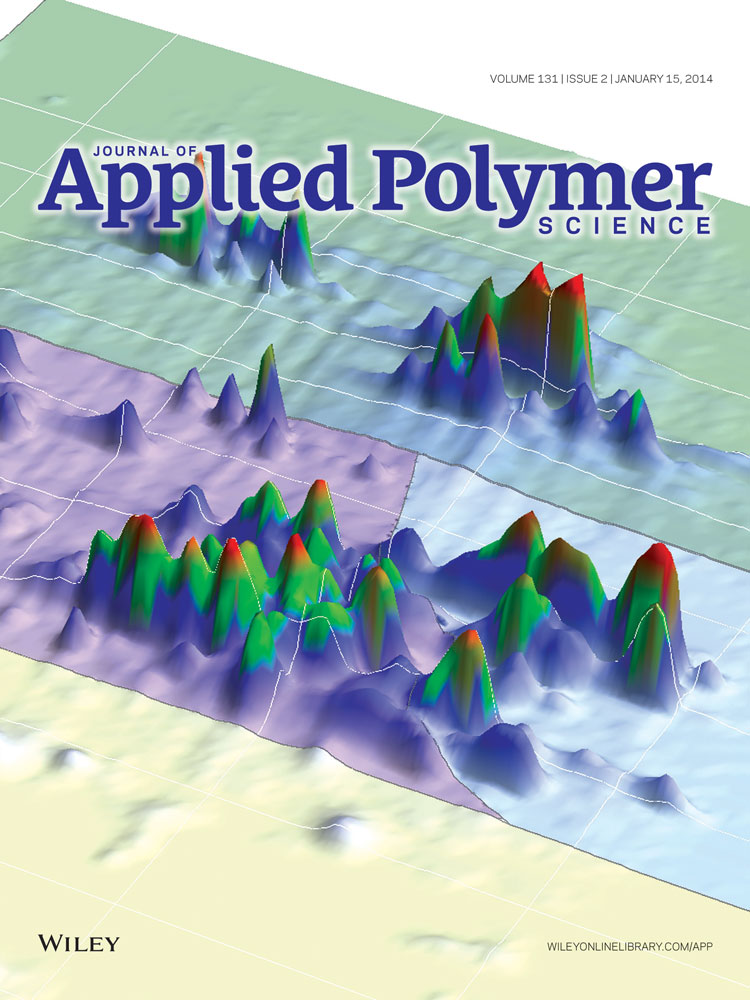Cassava starch-graft-polymethacrylamide copolymers as flocculants and textile sizing agents
ABSTRACT
Cassava starch-graft-polymethacrylamide (PMAM) copolymers were synthesized by a free-radical-initiated polymerization reaction, and the products were tested for their efficiency as flocculants and textile sizing agents. The highest percentages of grafting and monomer conversion were 79.9 and 78.0%, respectively. The grafted starches were characterized by Fourier transform infrared spectroscopy, X-ray diffraction analysis, scanning electron microscopy, differential scanning calorimetry, and thermogravimetric analysis. The average molecular weight of PMAM chains in the grafted starches ranged from 15.9 to 30.8 × 105 g/mol. The grafted starches exhibited a higher peak viscosity and paste stability in comparison to the native starch (NS). Dynamic mechanical analysis showed that grafting provided fairly shear-stable hydrogels, and the highest storage modulus obtained was 17,900 Pa compared to 1879 Pa for NS. The flocculation studies demonstrated the superiority of starch-g-PMAM over cassava starch and PMAM as an efficient flocculant. The tensile strength of cotton yarns sized with the starch-grafted copolymer was significantly higher (104 MPa) compared to that sized with NS (34 MPa). © 2013 Wiley Periodicals, Inc. J. Appl. Polym. Sci. 2014, 131, 39810.




